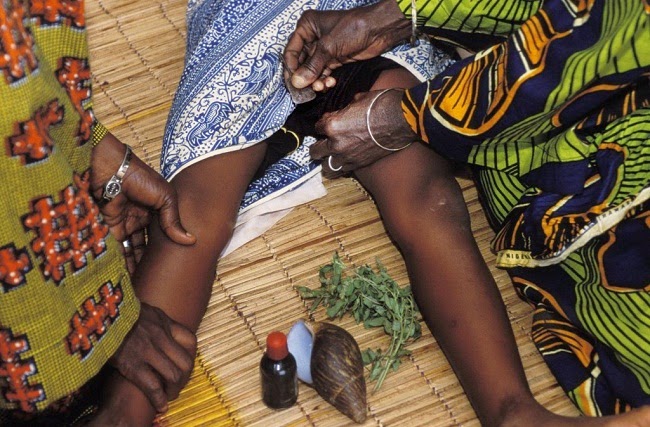Recent months have seen a raging debate in Kenya, Nigeria, The Gambia, Uganda and Zimbabwe over homosexuality, with critics denouncing it as “against African culture”.
African culture tends to be invoked more and more these days when there is division over social issues. Scant attention is paid to the historical function of African culture, or rather cultures.
The irony is that most of these cultures sought to maintain harmony and keep the peace in society: the acrimonious debates of today would have been anathema to the culture that the various sides on these social debates invoke or denounce. Norm, practices and rituals are a standard part of most African cultures, from north to south, east to west.
These traditions most often coincide with the three major events in everyone’s life – birth, death and marriage – as well as many in between momentous occasions – coming of age, healing illness and conflict resolution. The common purpose that runs through all these customs and traditions even when they handle such diverse areas of life is social harmony, physical, mental and spiritual wellbeing and stability, continuity and social safety. Of these, some of the most fascinating rites, rituals, customs and traditions pertain to death, maybe because of its finality and mystery.
Remarkable
Many African cultures have for centuries engaged in death rituals that display a remarkable correspondence to coping strategies that modern psychiatrists define as the “five stages of grief”: denial, anger, bargaining, depression, and acceptance. These stages were first described by Elisabeth Kübler-Ross in her 1969 book On Death and Dying and were based on her observation of terminally ill patients.
Most African cultures prescribed ways of responding to death from the moment it occurs, with a corresponding edict in case of a violation. However, contained in each of these prescriptions and prohibitions was a sound psychological or social principle. Among the Jopadhola people of eastern Uganda, for example, when a person died, those present at the time were expected to control their reactions lest the spirit of the deceased failed to proceed on its journey. Drums announcing the death would be sounded and it was only after this that mourners could break into loud wails of grief.
This seeming violation of one’s right to grieve freely was to give the mourners time to pull themselves together, absorb the shock and also afford the people making preliminary arrangements the psychological space to prepare the body in a dignified way. Upon hearing the drums and the wailing, relatives, friends and neighbours would gather and join in the mourning, letting go of all their inhibitions by wailing, crying, singing and dancing to funeral dirges.
To vent
The seeming chaos of this stage of mourning freed the bereaved to vent their frustrations and even question the deity in ways that would ordinarily be frowned upon in ordinary times. No bathing, combing of hair or farming activities were permitted over the next three days if the deceased were a man, four days if they were a woman. This suspension of normality to allow the bereaved to express their pain, anger and grief freely without feeling that they were flouting any norms bears great similarity to modern anger management methods used by many psychologists today. It had the therapeutic effect of draining one of feelings of despair and hopelessness.
In the meantime, special roles were assigned to maternal nieces and nephews of the deceased like lighting a log fire and keeping it burning. Customarily, this fire was supposed to keep the soul of the deceased warm and light its way on its journey. In practical and symbolic terms, however, it served many more purposes like keeping mourners warm through the night, frightening away wild animals and contributing to social cohesion role by giving maternal relatives a significant role to play in a home that was not their usual abode.
Washing and preparing the body for burial was the duty of the old, wise and respected persons in the clan and again, there were prescribed ways of positioning the grave and placing the body. These were meticulously followed, ostensibly to avoid the family being haunted by an unhappy deceased soul. But it served a therapeutic purpose of providing closure and diminishing the feeling of hopelessness and helplessness as the bereaved focused on giving their deceased a dignified burial. In any case, since the dead were considered to be “living dead” who continued to observe the living from the land of the ancestors, all the care and diligence was considered worthwhile.
New phase
A man would be buried on the third day after his death and a woman on the fourth. Thereafter, to start the process of healing, on the day after the burial, all mourners would gather at the river to bathe and shave their hair. The bathing was to symbolically wash away sorrow and the shaving of heads was to allow new growth to symbolise a new phase of life, renewal and continuity. Mourners would then return home and sweep the house to symbolise the beginning of a return to normalcy.
A clan meeting would then be held to ascertain the cause of death, install an heir, audit property, pay debts, receive payments of debts from people who acknowledged their debts to the deceased and any other pending issues. This was done in public to ensure consensus and avoid future conflicts. Mourners would continue sleeping outside the homestead on dry banana leaves for another two weeks after the burial to watch over the deceased’s grave, which was usually next to the house. This watch was to protect the body from “night dancers”, wild animals and grave robbers till the body decomposed.
Another reason for the continued presence of people was to give the bereaved communal support and comfort so that they did not slide into a depression. At the end of the two weeks, beer would be brewed and food shared to mark the extinguishing of the log fire, which had been kept constantly burning, and the removal of the ashes. This would signal the end of open mourning and a return to normalcy.
Nourished
The dry banana leaves that had been used for mourning would also be burnt as a signal for the bereaved and other relatives to return to their homes and normal routines. Each of these stages in the funeral rites was marked by communal eating and drinking to reinforce cohesion in the community and also make sure the bereaved stayed well nourished.
To defray the funeral costs, all mourners made contributions in cash or in kind according to their means. Between one and three years later, last funeral rites would be held to remember the deceased, who was now an ancestor, and reaffirm the will of the living to continue with life.
Many of these customs continue today with slight alterations but many have disappeared in the face of the onslaught of modernity and new religions. What remains truly amazing, though, is the logic that informed such practices. It would be nearly impossible to script them today.
•The writer teaches languages and communications at Makerere University in Kampala, Uganda, and researches African culture














